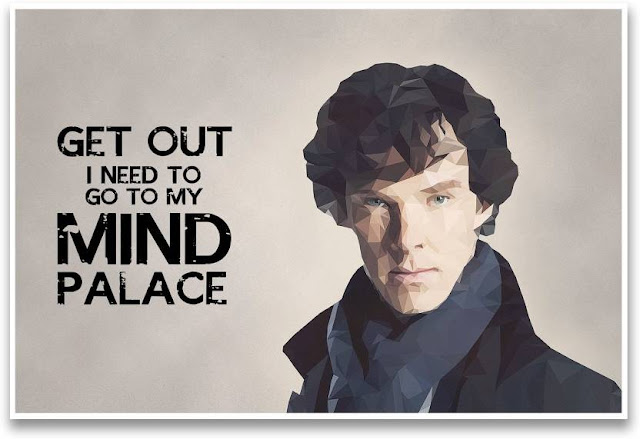Sherlock Holmes is famous for many things, one of them being a mind palace memory technique that actually exists. I am going to do a brief snapshot of how you create one for yourself, though I'd watch the videos done by youtuber Observe for more information, should you want more details. The link to the first mind palace video will be at the end of this blog.
What is this?
This has been around for much longer than Sherlock. It is the idea that you visualize a memorized place, mark certain furniture with certain numbers, then use the furniture (or whatever you choose to number) as files. We place our coats and purses on chairs in real life, come back for them, and repeat. This is exactly what you are doing in your mind when you use this technique.
Does it work?
Creating One
Listen very carefully to these steps, and watch the video link below, because if you create it wrong it falls apart real quick. I am giving you basics, so please do more research than this if you are doing this for real.
1. Memorize a place (keep it simple, if the space is cluttered mentally)
2. Walk the space and mark certain furniture or objects as 1,2,3.....etc.
3. Mentally walk the same path in your mind palace until you know it by heart. (No joke)
4. Load information into your mind palace NUMERICALLY and mark it as visually as possible.
5. Use your mind palace often to keep yourself sharp and your mind palace working.
Loading Information In
When you load something into your mind palace put a numerical number to it. This is where you are putting it, whether it looks silly or not. (The more out of the place, the better, actually.) Lists are easy, but what about speeches or lines in a play?
Well, let's take a four-paragraph speech and map this out. If the first paragraph is about your dog, the first visual image is your dog (doing whatever you want him to do). The second paragraph may be about your significant other, so visualize them (again, pose doesn't matter as long as you remember it). Paragraph three can be about your parents, so place them next. The last paragraph can be about your favorite book, so visualize the cover of your favorite book opening up. It takes some mapping out, but it really does work.
I will emphasize the need to go in numerical order and not go out of order because that is a recipe for failure all by itself. If file one is bookshelf one, and you're memorizing the previous speech we just discussed, the image is your dog doing ridiculous things beside or on top of the shelves. Don't put him at file three, his dog bed, just because it makes sense. No, the odder it is the more you remember.
As always, check my facts and correct me if you see something's not right. I aim to arm writers with truth, not lies. I have created a mind palace in the last week or so, so it is possible. You don't have to have Sherlock qualities to do it. Enjoy your new mind palace!
Sources:
https://www.magneticmemorymethod.com/memory-palace/
Pictures:
flipkart
magnetic memory method
oldschoolasc.com
https://www.youtube.com/watch?v=EDAZyA_YqRE - click this link for a video about Mind Palace Memory Technique. There are three more after this one done by the same youtuber.
































